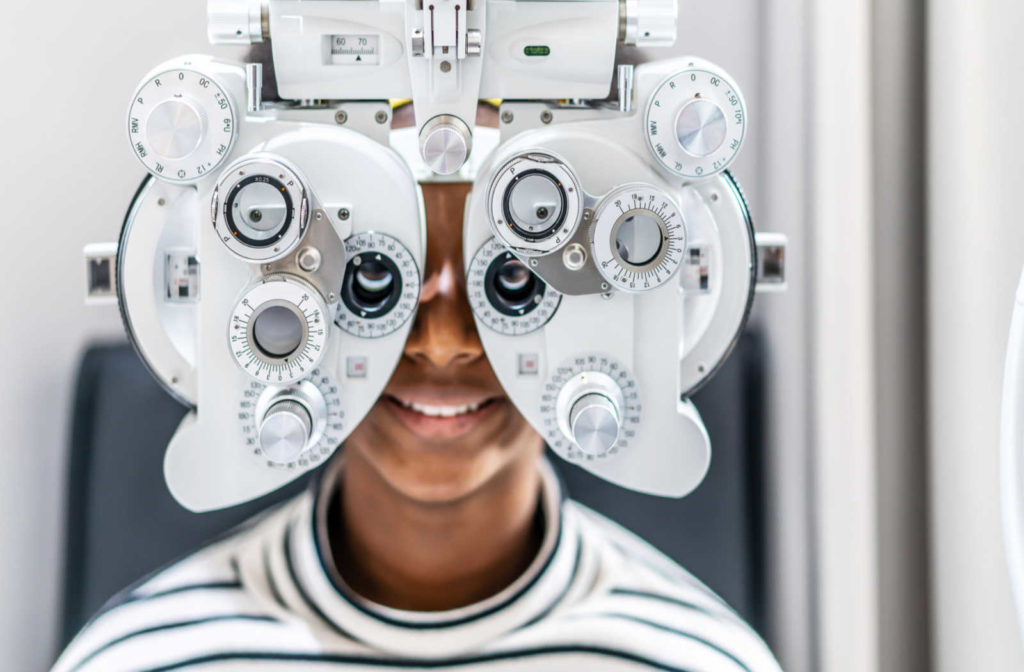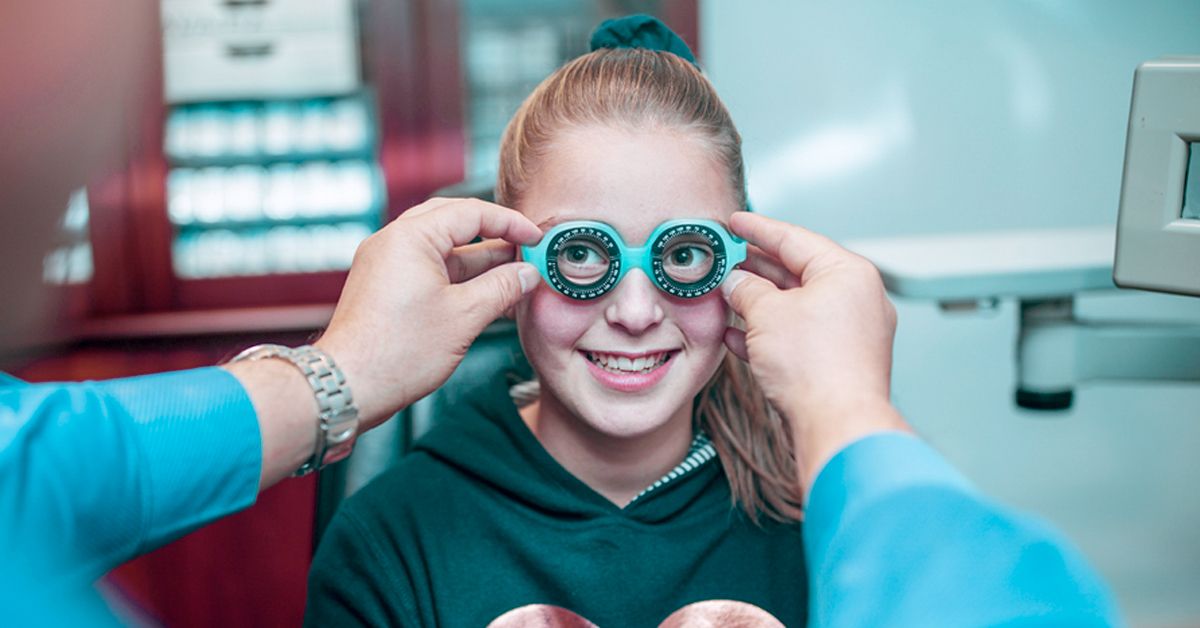Explore Advanced Providers at Opticore Optometry for Eye Health
Explore Advanced Providers at Opticore Optometry for Eye Health
Blog Article
Exploring the current Technological Improvements in Optometry and What They Mean for Eye Doctors
In the ever-evolving field of optometry, current technological innovations are improving how specialists approach eye treatment. From the precision of Optical Coherence Tomography to the nuanced understandings offered by AI-driven analysis tools, these technologies are setting brand-new requirements in individual assessment and treatment. Teleoptometry is poised to redefine accessibility, guaranteeing that know-how transcends geographical restrictions. As these innovations penetrate the practice, optometrists are faced with the obstacle of accepting these devices to improve patient end results. The concern continues to be: just how will these technical changes redefine the functions and duties within the profession?
Innovations in Diagnostic Tools
Advancing the area of optometry, developments in analysis devices have transformed the way eye care experts assess and identify eye problems and visual impairments. The past years has experienced considerable technological innovations, making it possible for even more extensive and accurate examinations. Optical Comprehensibility Tomography (OCT), for instance, provides high-resolution cross-sectional photos of the retina, allowing for the early detection of conditions such as glaucoma and age-related macular deterioration. This non-invasive imaging technique has actually become important in modern optometric method.
One more secret innovation is the intro of advanced corneal topography systems, which map the surface curvature of the cornea with precision. These tools are specifically valuable for fitting get in touch with lenses and identifying corneal problems. Furthermore, digital retinal imaging has actually changed standard ophthalmoscopy, using thorough, scenic views of the retina that promote complete visual assessments.
The growth of wavefront aberrometry has additionally been essential, making it possible for the evaluation of refractive mistakes with unparalleled accuracy (Eye Doctor Optometrist). This modern technology helps in customizing restorative lenses and enhancing medical results for refractive surgeries. Collectively, these diagnostic improvements equip eye doctors to provide remarkable client treatment, guaranteeing early treatment and customized treatment approaches, eventually enhancing aesthetic health outcomes
AI in Individual Management
Building on the foundation of innovative diagnostic tools, the unification of man-made intelligence (AI) in client management represents a transformative jump for optometry. AI systems are increasingly used to improve effectiveness, precision, and personalization in patient treatment.
Moreover, AI-driven platforms promote structured individual communications and management procedures. Automated organizing, virtual consultations, and individualized follow-up plans not just boost patient contentment yet additionally maximize time administration for practitioners. These systems can triage patients based upon the necessity of their conditions, ensuring that those in vital need receive punctual focus.
Additionally, AI improves decision-making by offering optometrists with evidence-based suggestions and treatment pathways. By incorporating data from digital health documents, AI devices use understandings that inform professional choices, minimizing the threat of mistakes and improving patient end results. As AI continues to develop, its duty in client administration will likely increase, improving the landscape of optometric treatment.
Developments in Retinal Imaging
In the world of optometry, retinal imaging has witnessed amazing technical improvements that are boosting analysis capabilities and person treatment. Advancements such as Optical Coherence Tomography (OCT) and fundus photography have actually reinvented just how eye doctors imagine and evaluate the retina.
Improved imaging modalities like OCT angiography are more refining diagnostic accuracy. Eye Doctor. Such advancements facilitate the identification of min retinal adjustments that can symbolize illness progression.
Moreover, innovations in artificial knowledge are enhancing retinal imaging by allowing automatic analysis of large datasets. These systems help eye doctors in determining patterns indicative of pathology, consequently boosting analysis precision and effectiveness. Jointly, these technologies are changing retinal imaging right into a foundation of modern-day eye care, enhancing end results and broadening healing possibilities.
Teleoptometry's Growing Role
Teleoptometry is significantly becoming an essential element of eye care, driven by advancements in electronic interaction and analysis devices. As optometry accepts digital change, teleoptometry helps with remote appointments, allowing eye doctors to expand their solutions past typical boundaries. This is particularly beneficial in underserved and rural areas where access to specialized eye care is commonly restricted. By leveraging high-resolution video conferencing and advanced retinal imaging, optometrists can perform comprehensive eye exams from afar, making sure timely diagnosis and treatment.
The integration of synthetic knowledge (AI) additional improves teleoptometry, making Get More Information it possible for the analysis of visual information and aiding in the discovery of ocular conditions such as glaucoma and diabetic retinopathy. AI-powered formulas can quickly analyze complicated imaging information, offering eye doctors with useful understandings that strengthen scientific decision-making.
Additionally, teleoptometry supports continuity of care via smooth assimilation with electronic health and wellness records (EHRs), permitting eye doctors to keep thorough client histories. This makes sure that individuals receive constant and individualized care even when talking to different practitioners.
Despite these advantages, difficulties remain, consisting of guaranteeing data safety and security and handling person assumptions. Teleoptometry represents a substantial stride in the direction of even more accessible, reliable, and patient-centered eye treatment. As innovation progresses, its duty is positioned to increase further.

Future Fads in Eye Care
A myriad of innovative patterns is established to improve the future of eye treatment, driven by technical developments and the developing demands of clients. One substantial fad is the combination of fabricated intelligence (AI) in diagnostics, which guarantees to improve the precision and efficiency of eye examinations. AI formulas can analyze huge quantities of data from retinal pictures, potentially detecting problems like diabetic retinopathy and glaucoma earlier than typical techniques.
In addition, tailored medicine is gaining grip in optometry, with genetic screening informing customized therapy strategies. This approach aims to maximize client results by customizing interventions to specific genetic accounts. Wearable innovation, such as clever call lenses, is additionally coming up, offering real-time tracking of intraocular stress or glucose degrees, hence providing continual insights right into ocular and systemic health.
The fostering of augmented truth (AR) and digital reality (VR) in training and patient education is one more arising fad. These modern technologies provide immersive experiences that can improve understanding and abilities both for optometrists and people. As description these trends progress, optometrists have to stay abreast of technological advancements to provide innovative care, ensuring improved individual end results and fulfillment in the vibrant landscape of eye care.
Final Thought

Collectively, these analysis innovations equip eye doctors to provide premium patient treatment, making sure very early intervention and tailored therapy techniques, eventually improving visual health and wellness results.

As these innovations proceed to develop, eye doctors have to adapt and integrate them into technique, ultimately enhancing operations efficiency and raising the requirement of eye care supplied to individuals.
Report this page